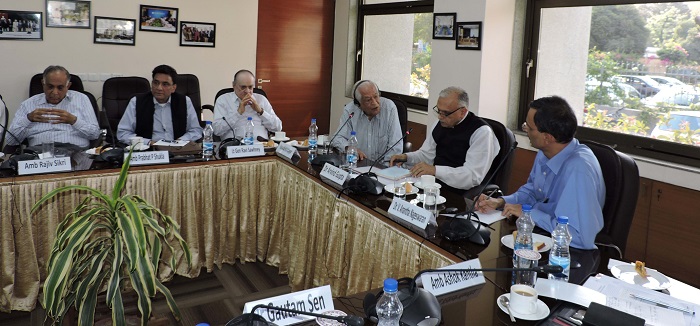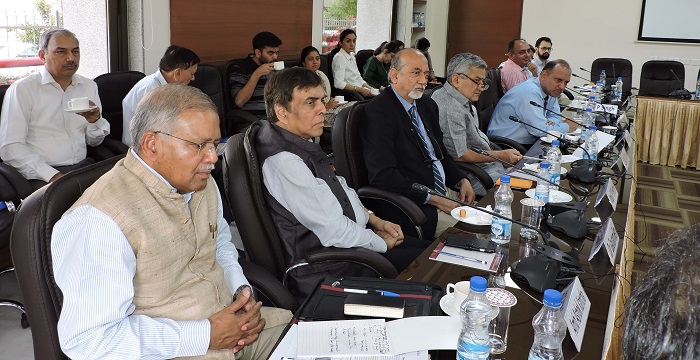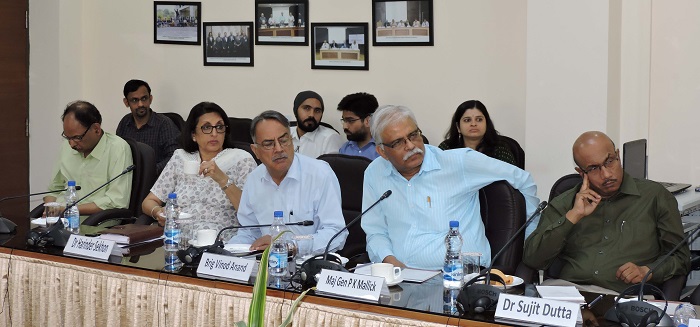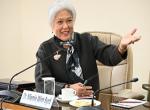On March 16th, Vivekananda International Foundation (VIF) hosted the Singapore based Dr. Ananth Nageshwaran, a Distinguished Fellow at VIF. Dr. Nageshwaran gave a presentation on the current situation of the Chinese economy. Dr. Arvind Gupta, Director VIF, presided over the participative meeting. Dr. Gupta began the meeting by mentioning that it is really important to understand the direction of the economy and its vulnerabilities.

Dr. Nageshwaran, through his presentation titled, ‘The Wile E Coyote Moment for China’, highlighted the looming debt crisis in China due to the loans taken by Chinese State Owned Enterprises (SOE), and also by Chinese households. He also pointed out that although the Chinese economy is “too big to fail”, it is stagnating because of over-capacity, falling exports and less inflow of foreign direct investments into China. The presentation also highlighted the ‘shadow-banking’ system and how complicated and complex it is to understand the system, as elucidated in following paragraphs.
It is not easy to rely on official Chinese economic data which is heavily politicised. The Chinese economy may not tumble like the rest of the world’s economy did in 2008 but the growth rate has sharply decreased from the official numbers suggested. A major issue with the Chinese data on the economy is the constant overstating of economic targets being achieved by Chinese provinces. Chinese provinces, in order to achieve their targets, lead State Owned Enterprises (SOE) to borrow heavily and this has been a major reason for China’s growth after the Global Financial Crisis of 2008.

While the Chinese Government is taking major steps towards tackling the crippling debt load, many essential terms like ‘de-leveraging’, ‘market’, plans for property tax etc. are missing from the previously adopted blueprint. The blueprint contradicts what is happening now as Chinese banks are giving more corporate loans to SOEs compared to private Chinese firms, and yet, these firms are making profits compared to their State owned counterparts, whose growth is dwindling.
China’s economic system is bank dominated and financial assets grew from 263 percent of the GDP to 467 percent in 2016. This growth is due to inter-connectivity and complexity of their banking systems. The future of Chinese economy however looks bleak because along with heavy borrowing from SOE’s, Chinese households too have borrowed heavily. The current borrowing rate of Chinese households puts them at risk of a market collapse in the next five years as happened in the United States of America in 2008.

China has not had a crisis yet because the big four banks are State owned while provincial governments have important stakes in low tier banks. The State also controls a large share of other segments of the financial system, such as insurance companies, trusts, and securities companies, as well as the financial sector's largest borrowers; the pervasive nature of State control inevitably influences credit allocation (Source: IMF). Foreign Companies feel that they are unfairly treated by the Government compared to local companies and also complain about inconsistent regulatory interpretation among challenges of doing business in China. For the first time, compliance and enforcement made it to the list of top challenges faced by Foreign Companies while conducting business in China in 2018.
Dr. Nageshwaran concluded the meeting by showing a statement made by the former Finance Minister of China that it faces financial risk bigger than the United States faced before the Global Financial Crisis in 2008. He concluded the meeting by showing data on how Chinese SOEs are borrowing “more for less time” to pay back even more, leading to fragility of the Chinese economy.







